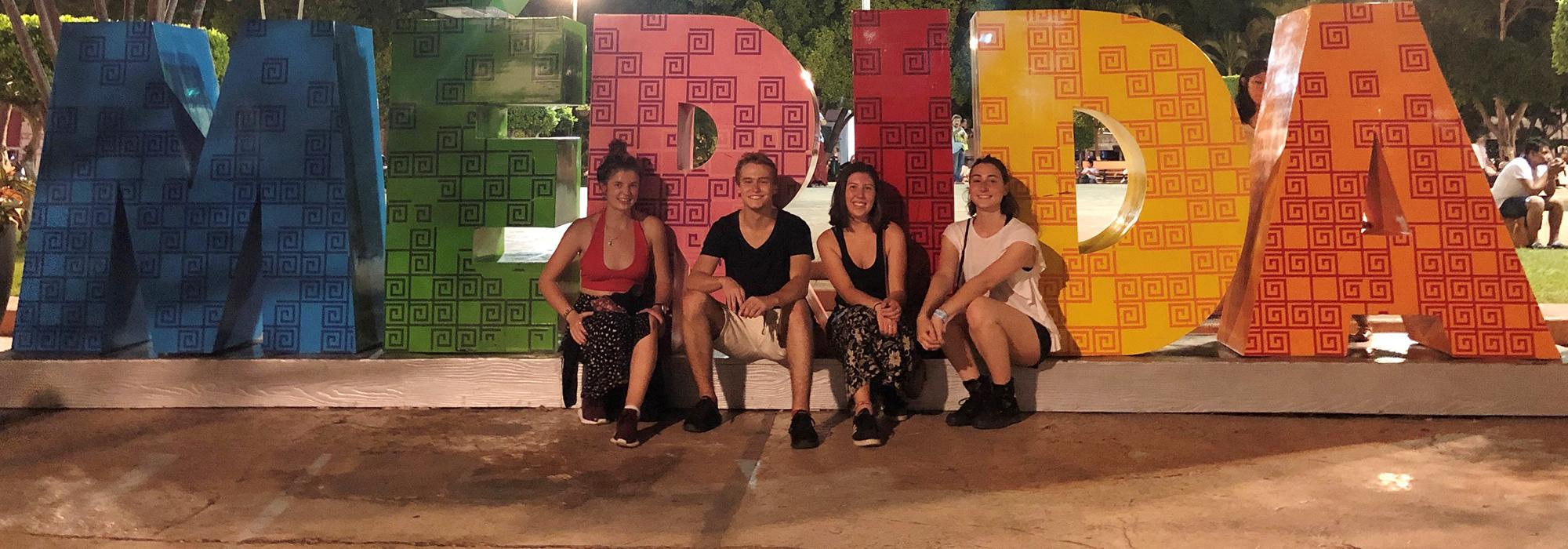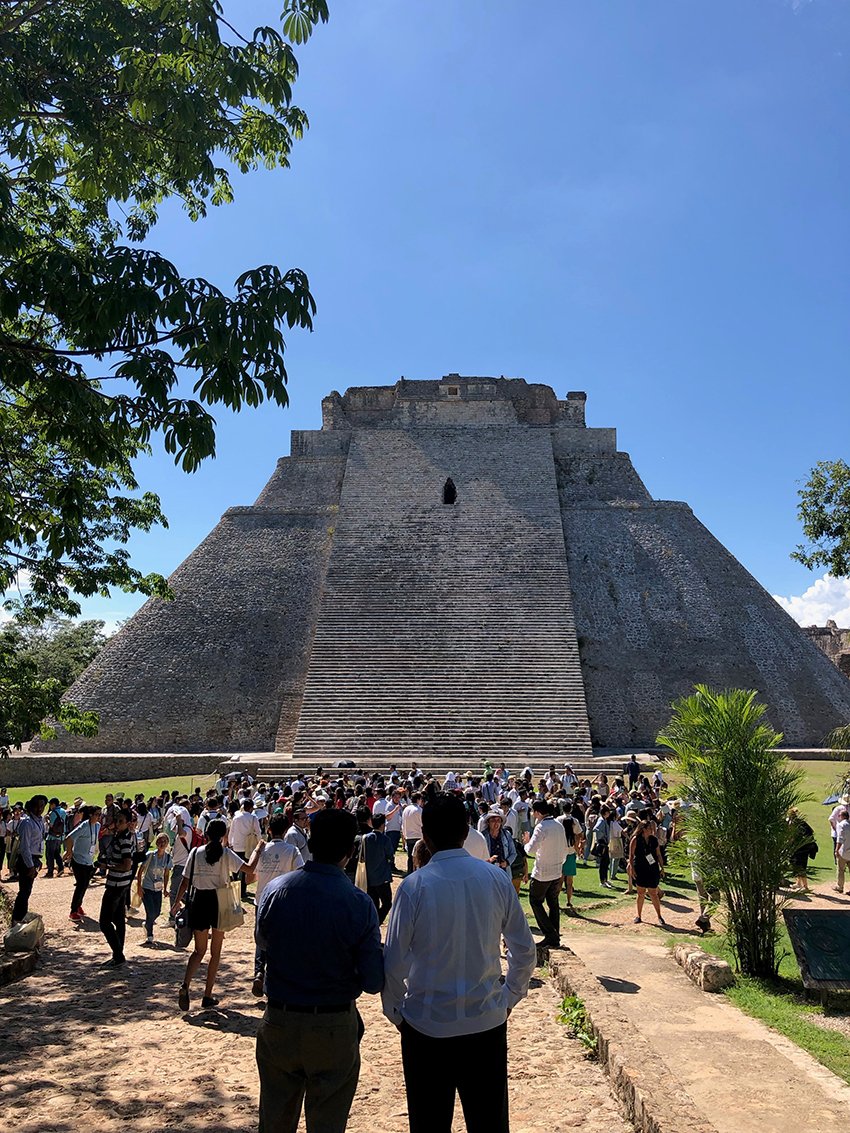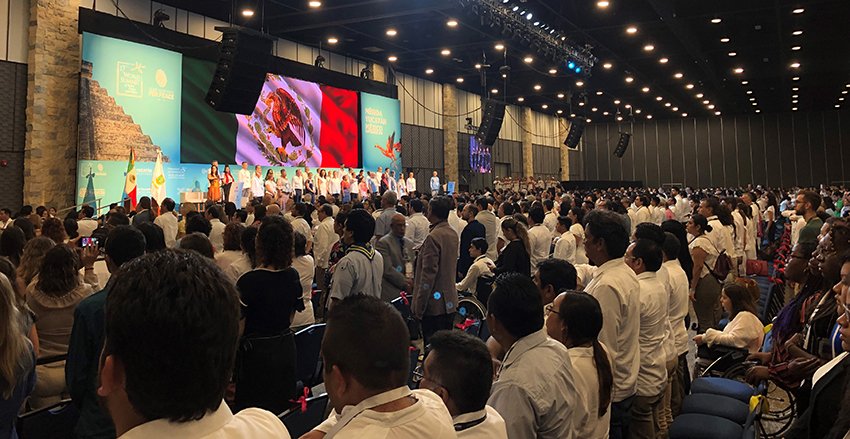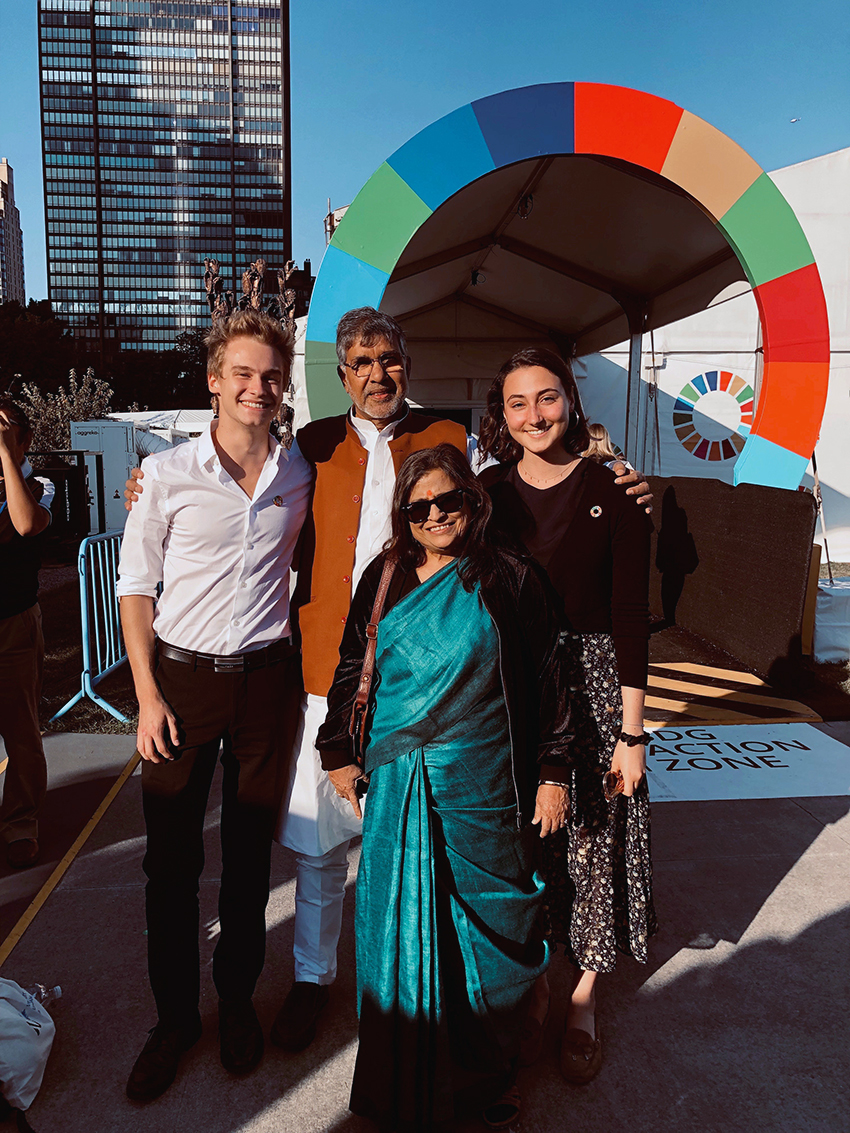
Report: A trip to the World Summit of Nobel Peace Laureates, September 2019
Assisted by an Undergraduate Travel Grant, in September 2019 Economics & Management undergraduate Mario Stepanik travelled to Mérida in the Mexican state of Yucatán to attend the 17th World Summit of Nobel Peace Laureates.
Driving on the worn-out streets of Yucatán, Mexico, my colleague Marlene and I pensively looked at the back of the receipt we had been scribbling on. We needed to get a message across – one which we want to be rooted in everyone’s mind and which is rooted in the core mission of Initiative Interchange, the youth network spanning 25 countries we founded in 2017.

We were on our way to Mérida, the host city of the 17th World Summit of Nobel Peace Laureates – a forum which unites two dozen Nobel laureates every year and has repeatedly been called the world’s most significant peace summit. The invitation to speak at the summit was a momentous event in both of our lives and naturally, we wanted to live up to the expectations of the young people around the world whose voice we were.
Seeing palm trees and an occasional rusty Volkswagen pass by, we drafted and overhauled outlines of our perception of a complex problem: Giving all children access to education. The reasons they are not in school have been explored, initiatives have been started, schools have been constructed. But still, for some reason, the percentage of out-of-school children has not decreased in the last 12 years.

At the summit, it was our declared goal to demonstrate how the mobilization of the masses can change the perception of the problem. It is not a daunting, unattainable goal and individual action is not pointless. It is just as attainable as a polio-free world, as Rotary demonstrated over the last few decades, provided that international decision makers, leaders, and the public cooperate.
In front of young people from all around the world, we presented Read to Change the World – an initiative which aims to have 100 million children participate in a read-a-thon to increase literacy and raise funds for educational projects. In a read-a-thon, schoolchildren read for 15 hours over the course of a month while sponsors donate a small amount for every hour read. On a small scale, the concept has proven to be successful in several prototypes and we want to prove that it can change the world of education fundamentally.

Together with our team members from the US and the UK, we explained our ideas and vision, involved the audience in the formation of a movement, and invited them to adopt our mindset – our projects have to be based on what needs to be done, not what we can do at the moment. We managed to excite several Nobel laureates with these ideas, among them the Indian education activist Kailash Satyarthi (Nobel 2011) – we are now discussing ways to make our plan reality with his foundation.
The personal and academic benefits I drew from this experience overlap: Leading a team of 17 students from four continents in this initiative, I gained an understanding of the psychology of motivation and the influence of different cultures which no textbook could explain to me. I saw what it takes to have a team whose members come from fundamentally different backgrounds achieve challenging goals (e.g., putting together a 75-minute presentation in a few days or organising a prototype on five continents). Many ideas in management seemed abstract and not relatable before, but now I can set them into context and have experienced their relevance and truth firsthand. I am grateful for this opportunity and happy to continue providing updates on the progress of the project.